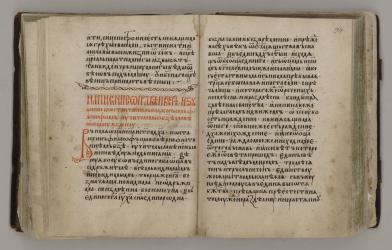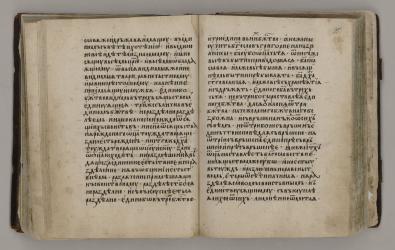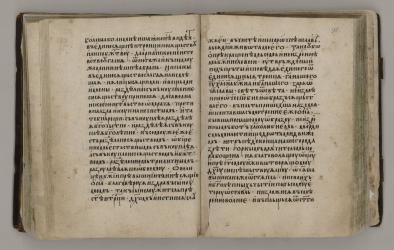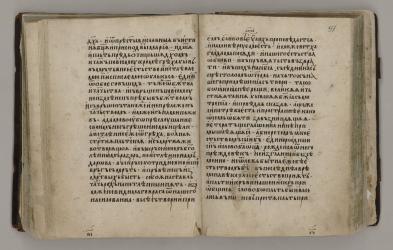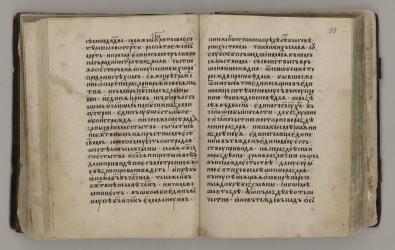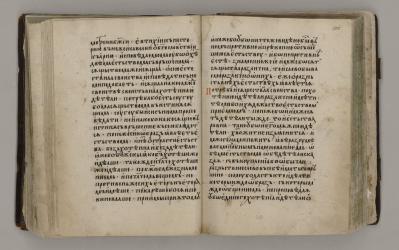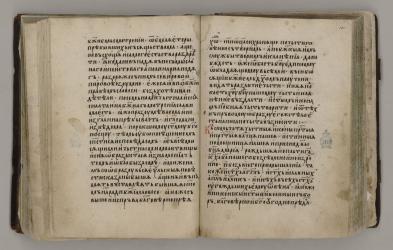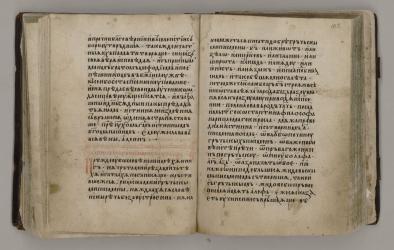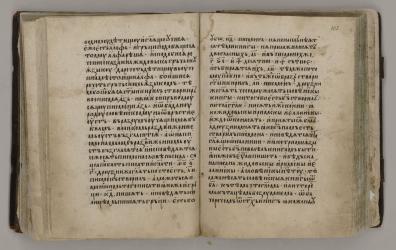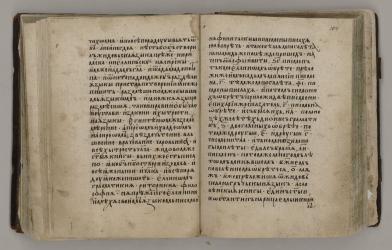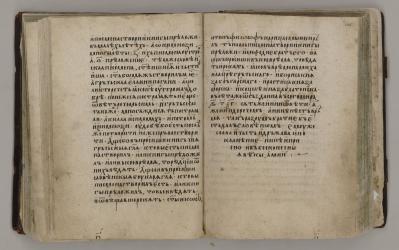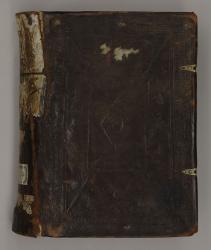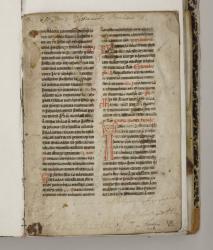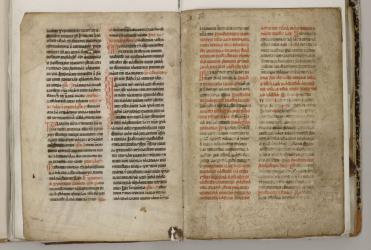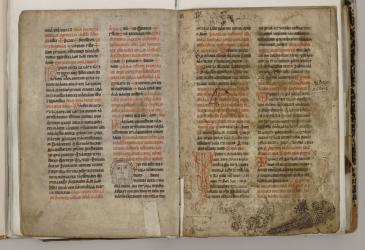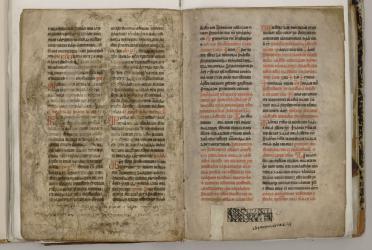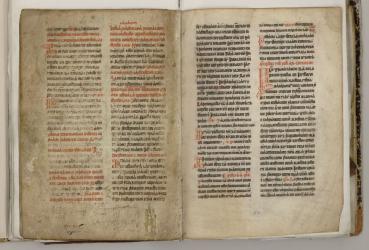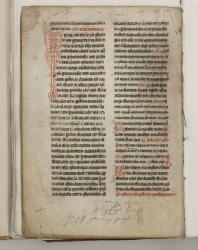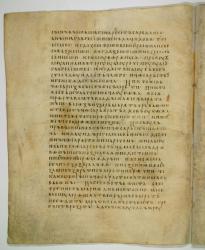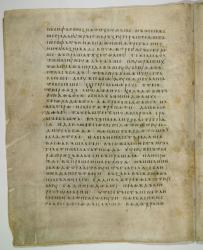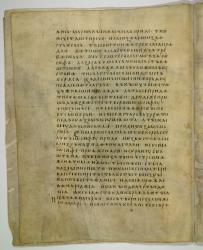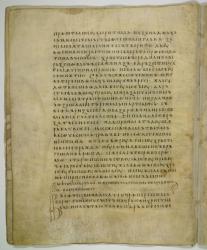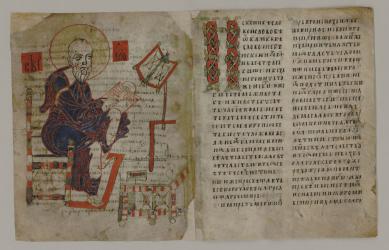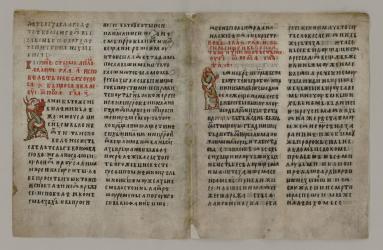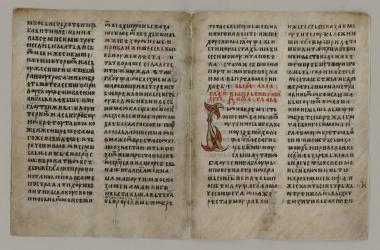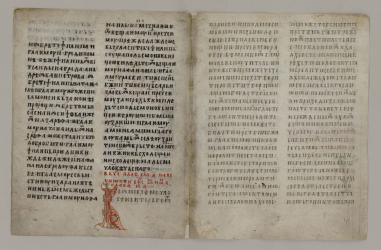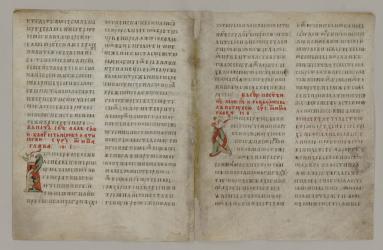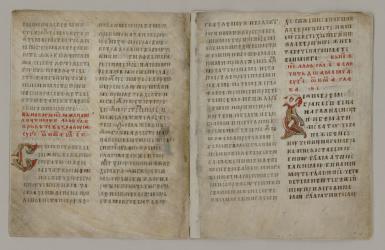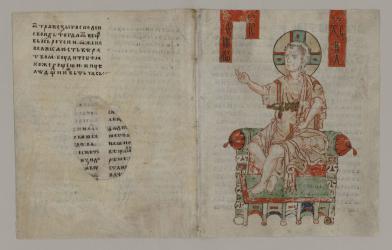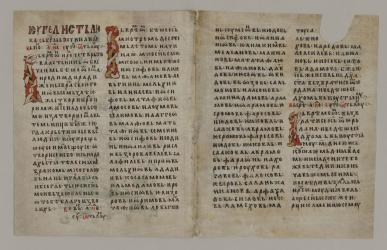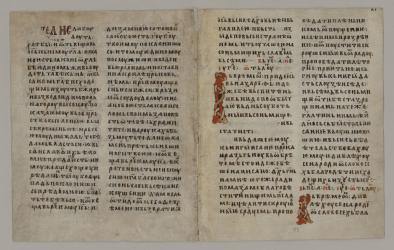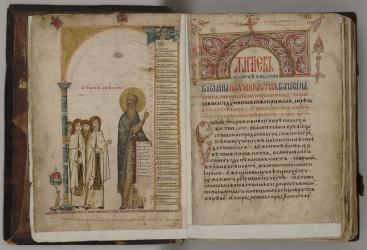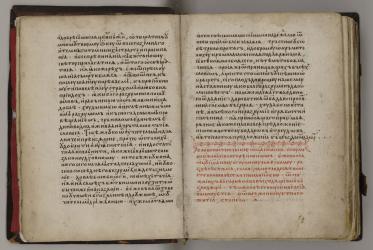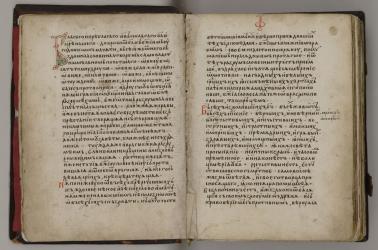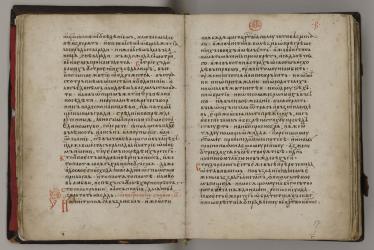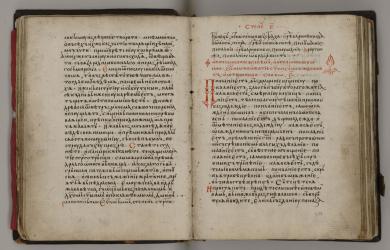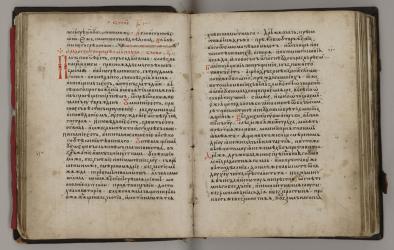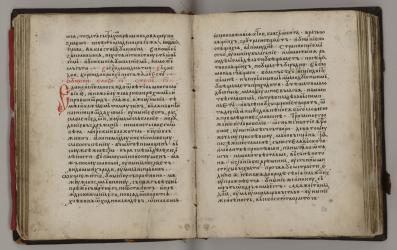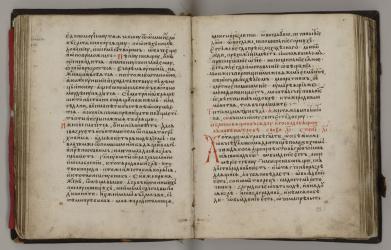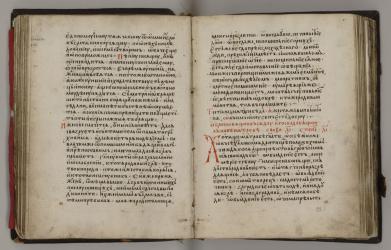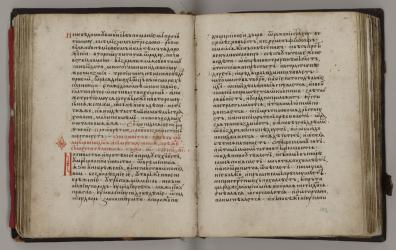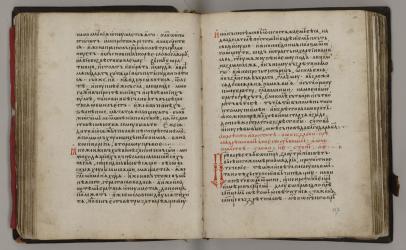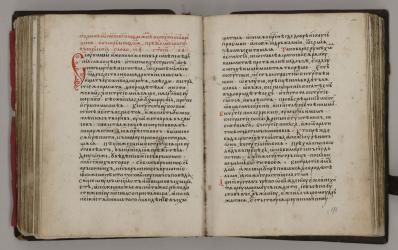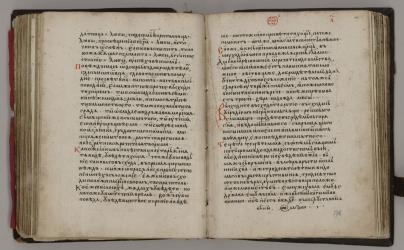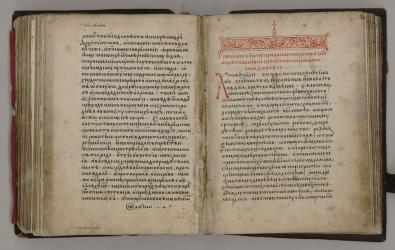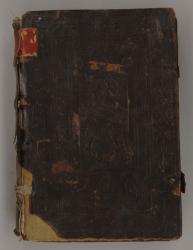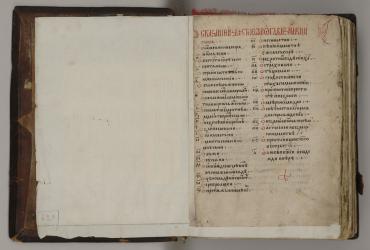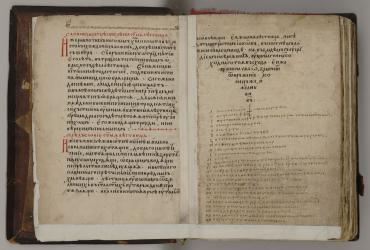South Slavic Manuscripts
Speaking about the Glagolitic literary landmarks, we should highlight the unique value of our Glagolitic collection that provided insight into development of the Glagolitic writing throughout the centuries of its existence. The National Library can boast the earliest Glagolitic manuscripts dating the 11th century, among them the celebrated Zograph Gospel which was presented to the Russian government by the monks of the Zograph Monastery on Mount Athos in 1850. No less valuable are folios from the Euchologium Sinaiticum (Sinaitic Euchologionthe), containing the liturgy of the St. John Chrysostom. It was found in Saint Catherine's Monastery on Sinai in 1850 by the Russian Archimandrite Porphyrius Uspensky and also dated to the 11th century. Both landmarks are written in the early, rounded Bulgarian-Macedonian Glagolitic script.
The strongest tradition of the Glagolitic writing were in Croatia, where the Glagolitic script remained in active use for a long time (in Dalmatia, Croatian Littoral, Istria). Here the letters have acquired angular forms under the influence of the Latin Gothic script during the 12th century. This angular (or Croatian) Glagolitic script along with Latin and Cyrillic alphabet was used in Croatia until the 19th century, as evidenced by the unique materials of the Ivan Berčić Collection.Of particular interest are fragments of Glagolitic manuscripts of the 13th - 15th centuries. With the appearance of printed Glagolitic books at the late 15th century, these manuscripts gradually fell out of use, but their leaves were used as material for binding other books. Thanks to this circumstance, a large part of Croatian medieval Glagolitic manuscripts has been preserved, although fragmentary.
The South Slavic Cyrillic books stored in the Manuscripts Department are produced in scriptoria located in various regions, they differ in linguistic features, being a valuable material for studying the history of Slavic languages. On the South Slavic soil, various types of the Cyrillic script were developed.
The National Library possesses such rarities as a part of the 11th century Codex Suprasliensis included in UNESCO's Memory of the World list; the ancient Serbian Miroslav (a fragment) and Vukan Gospels; the 14th-century Bulgarian Ladder of Divine Ascent distinguished by the original image of John Climacus. Noteworthy is also a collection of works by the leading figure of the early Bulgarian National Revival St. Sophronius of Vratsa, written by his hand and containing self-portrait of the author.The Internet resource Serbian Manuscripts in the National Library of Russia provides access to all Serbian handwritten books held in the Library's manuscript collections. These are 378 manuscripts from the 12th to 19th centuries, which will interest not only a wide range of scientists but also the general public.
View virtual exhibitions:
Cultural heritage of Europe in the collections of the National Library of Russia. Croatia
Cultural heritage of Europe in the collections of the National Library of Russia. Bosnia and Herzegovina
Cultural heritage of Europe in the collections of the National Library of Russia. Serbia
Day of Slavic Culture and Writing
Petersburg Leaf from the Twelfth Century Miroslav Gospel
South Slavonic Manuscript Gospels from the 11th - 16th Centuries
